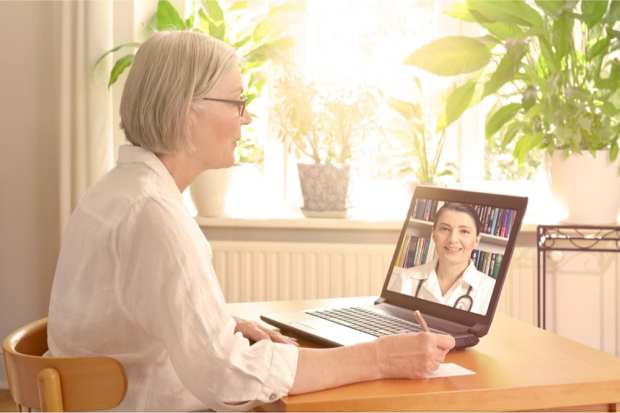Why Telehealth Will Go On Strong Long After COVID-19

Getting U.S. patients to use telehealth services was a challenge in a pre-COVID world, with JD Power finding that only 10 percent of consumers used telemedicine in 2019. But then the pandemic hit, doctors’ offices shut down and patients and providers suddenly saw telehealth in a new light.
A recent study of patient visits at NYU Langone found virtual visits rose 4,345 percent for non-urgent care between March 2 and April 14, and also rose 683 percent for urgent care.
PYMNTS has spoken several telehealth innovators over the past several weeks and the consensus is that such shifts won’t be temporary, as COVID-19 has done a lot to change how we view healthcare.
“This situation has really laid bare a lot of the issues that have been within the system for this whole time,” Murray Brozinsky, CEO of virtual care platform Conversa Health, explained in a recent conversation with PYMNTS. “This was building, but what telehealth likely required was a catalyst, [and] COVID-19 has now been that catalyst that pushed it … right over the edge.”
Telehealth got its first big boost in March when the Trump administration temporarily eased government payment rules for such visits. Healthcare providers were suddenly able to receive full Medicare and Medicaid reimbursement for telehealth visits at the same rate as those provided in person.
That pushed private insurers to adopt similar rule changes as well. The ability to receive full compensation inspired more providers to offer digital health services and market them more actively to patients. That put the option of telehealth in front of more patients. As more providers offered virtual service, patients could see their own doctors as opposed to experimenting both a new delivery mechanism and new clinician at the same time.
Ryan Krause, vice president at healthcare software company Epic Systems, told PYMNTS the 3,000 hospitals and more than 250,000 physicians currently using the firm’s software are doing more and more virtual visits. He said that the company’s software enabled fewer than 50,000 appointments in February before the pandemic really hit. But that jumped to 2.5 million by April.
Both Krause and VillageMD Co-Founder and CEO Tim Barry told PYMNTS recently that telemedicine not only makes patients feel safer in a COVID era, but can lead to better clinical outcomes. Barry told Karen Webster that digital tools can enable more holistic treatment plans that don’t have to revolve around office visits.
“The goal is to offer an access point to a comprehensive model that says: ‘For as long as you’re trying to manage a condition, we’ve got a team of people and we’ve got a set of technologies that are going to be working with you to make sure that we get better outcomes,’” he said.
Telehealth access is part of that equation, as are tracking tools that enable things like sending consumers reminders about taking their medications. Staffers can also follow up with patients to make sure treatments are working as planned or direct consumers to convenient clinics for in-person visits. Barry said that last part is why VillageMD recently partnered with Walgreens to build primary care clinics in 500 to 700 stores across 30 underserved U.S. markets.
As for what comes next for telehealth, the picture looks uncertain. As could be expected, patients’ recent explosive interest is easing off some.
And not everyone is an unabashed supporter. Primary care physician David Blumenthal wrote recently in Harvard Business Review that telehealth has limits. For instance, patients on a screen might not actually provide a doctor with enough information to confidently treat the person, particularly those with complex chronic conditions.
“Well-trained clinicians use all their senses — not just hearing and vision. They appraise the whole patient: Is there a new limp, a shift in posture, a new pallor?” he wrote. “Often, it’s what patients don’t notice or complain about that is essential. And there is no diagnostic test more cost-effective than the laying on of hands. I have found treatable cancers multiple times in routine exams that would be impossible to replicate in the virtual world. Could a Zoom visit detect a lymph node too firm, a spleen or liver too large, or an unexpected prostate nodule (with a normal PSA)?”
But few of the telehealth innovators we’ve spoken to recently are pushing for fully replacing traditional office visits with digital ones. They also say that for patients with complex conditions, virtual visits can actually increase how often they see their doctors.
“This is definitely going to be part of our future, and I think the needs we’ve seen exposed will get built into the way we work and provide care,” Conversa’s Brozinsky said.
